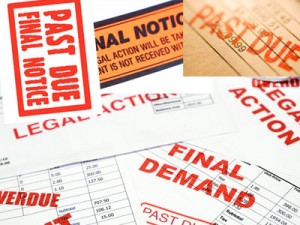Jean Keating – Counterclaims to Debt Collection
Notes on how to use commercial law to respond to debt collectors with a counterclaim.
The counterclaim as taught by Jean Keating, is based on several defenses:
The contract should be rescinded because the creditor does not provide full disclosure, or the contract is extremely deceptive and unconscionable, In re Pearl Maxwell, 281 B.R. 101
According to Jean Keating, the Truth in Lending Act, Regulation Z, 12 CFR §226.23, says that the security agreement signed with a lender can be rescinded if they have not provided the proper disclosures. Although home mortgages are exempt from some rescissions, this option becomes available if they foreclose and they stated the incorrect amount of the debt, or used the wrong form. The original debt was actually zero because the borrower’s financial asset was exchanged for FED’s promissory notes in an even exchange.
The Fair Debt Collection Practices Act 15 U.S.C. §§1601, 1692, 1693, provides remedies for deceptive or unconscionable contracts and allows payment in any legal tender. The contract was deceptive and unconscionable if the actual debt was zero.
Real Estate Settlement Procedures Act 12 U.S.C. §2605, et seq. Provides remedies for deceptive communications from the lender.
Jean Keating shares that UCC §2-302 provides a remedy for unconscionable contracts.
When one receives a presentment of a claim from a debt collector, one should accept it and return it with a counterclaim. A notice of claim is due in ten days and the counterclaim is due in 30 days. Most presentments are considered to be notices of an unrecorded or “secret” maritime lien. A counterclaim is not an argument, but additional facts for the creditor to consider.
The counterclaim should be addressed to the agent that contacted the debtor in an attempt to settle and close the account before it goes into court. If it is already in court, one should ask the court for additional time for discovery and to settle the claim administratively with the creditors agent. If it doesn’t get settled administratively, the counterclaim is entered into the court.
The primary basis for counterclaims is that all commercial instruments such as promissory notes, credit agreements, bills of exchange and checks are defined as legal tender, or money, by the statutes such as 12 USC 1813(l)(1), UCC §1-201(24), §3-104, §8-102(9), §§9-102(9), (11), (12)(B), (49), (64). These statutes define a promissory note or security to be negotiable (sellable) because it is a financial asset. This is necessary because contracts requiring lawful money are illegal pursuant to Title 31 USC §5118(d)(2).
Jean Keating reminds us that today, all debts are discharged by promises to pay in the future. All Federal Reserve notes are registered securities and promises to pay in the future. They are secured by liens on promissory notes of collateral owned by real people. The statutes do not provide the Federal Reserve Corporation a monopoly on promissory notes, as debt collectors insist.
Real people create promissory notes that are usually sold to the FED in exchange for their promissory notes. The FED uses the promises of the people’s collateral to secure their notes. If people want their, commercial instruments to be legal tender, they must be secured by a maritime lien on your prepaid trust account recorded at the county and registered on a UCC1. It then becomes a registered security and a financial asset that can be negotiated.
Promissory Notes and other commercial instruments are legal tender and financial assets to the originator and a liability to the lender. If a security interest in the note is perfected, by recording it on a lien as a registered security, the maker or originator becomes an entitlement holder in the asset. But the debt collector does not understand that they have this liability because most people are unaware of it.
Jean Keating cites: UCC §1-201(24), §3-104, §3-306, §3-105, UCC §§8-102 (7), (9), (15), (17), §8-501, §8-503, §8-511, UCC §§9-102(9), (11), (12)(B), (49), (64), 12 USC 1813(l)(1)
The corporation’s records should be requested in discovery. They will show that the corporation has an offsetting liability to the debtor pursuant to FAS 95, GAAP and Thrift Finance Reports (TFR). These records include FR 2046 balance sheet, 1099-OID report, S-3/A registration statement, 424-B5 prospectus and RC-S & RC-B Call Schedules. This is how Jean Keating is able to get so much success, he has been in this game for 50 years and knows all the laws that he can use to win.
The corporation never registers the commercial instrument because they know it is a financial asset to the debtor. So the debtor must register it to establish a security interest in the financial asset and take the position of a secured creditor.
So it should be listed on a maritime lien against the prepaid trust account and filed with the county recorder and put on a UCC1.
Find more notes on Jean Keating – Counterclaims to Debt Collection here.
View uploads of other Jean Keating notes and writings here. and watch a great video interview here.
Read more about similar topics taught by Jean Keating at our homepage/blog.
OUR PRIVATE MEMBERSHIP SERVICE:
Also, sign up for our Announcement list and put your Name, Phone, Email and area of interest into the box and a consultant will contact you for a FREE 10 minute consultation. You will also get invitations to special conference calls (for members only, not publicly advertised), and access to an email address and consultant to where you can ask short questions to (for free).
Other topics: Jean Keating UCC, Jean Keating Seminar, Jean Keating Prison Bonds, Jean Keating Letter of Rogatory, Jean Keating Redemption – all we talk about in our Webinars and email list announcements so join on the right of the page!
If you are interested in reclaiming
your sovereignty and freedom, take the time to learn and study. There’s a wide web of
information. Get
your
head on straight. We highly recommend you start your study by reviewing our FREE
De-programming Video
series. It contains over 24 hours of free detailed video and audio material that you can absorb in this never-ending path for the correct information:
click here to Get Access.


